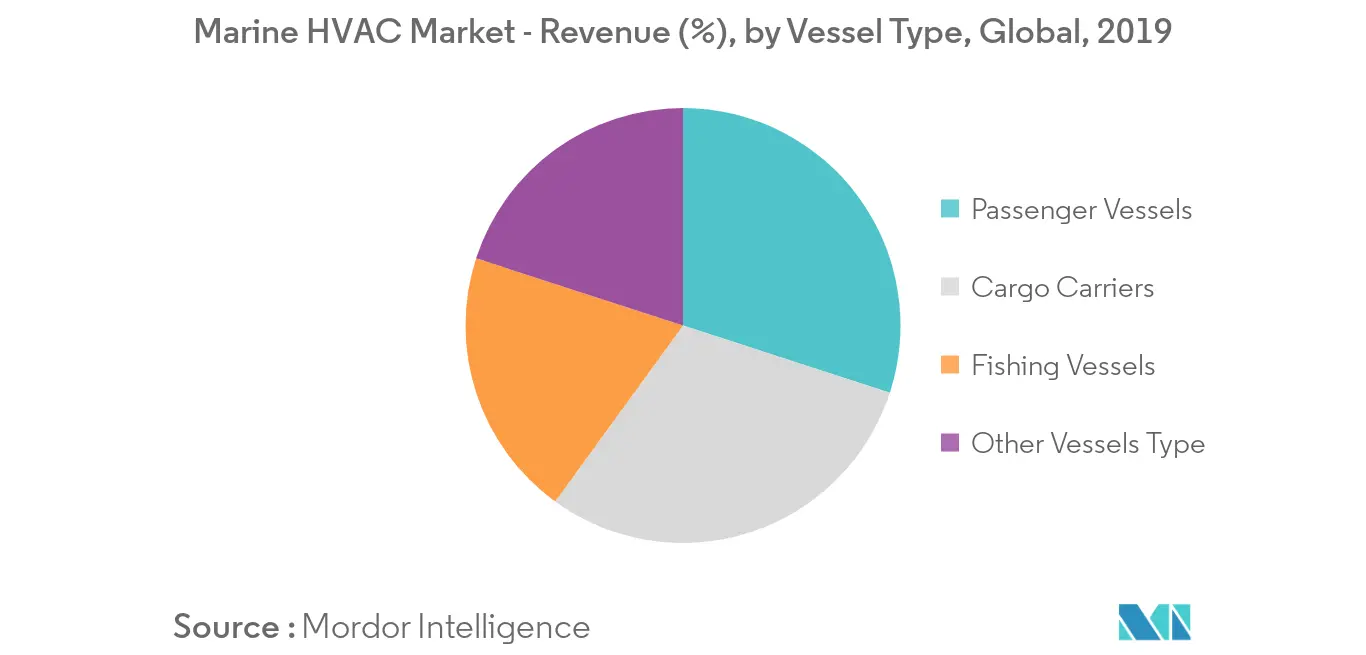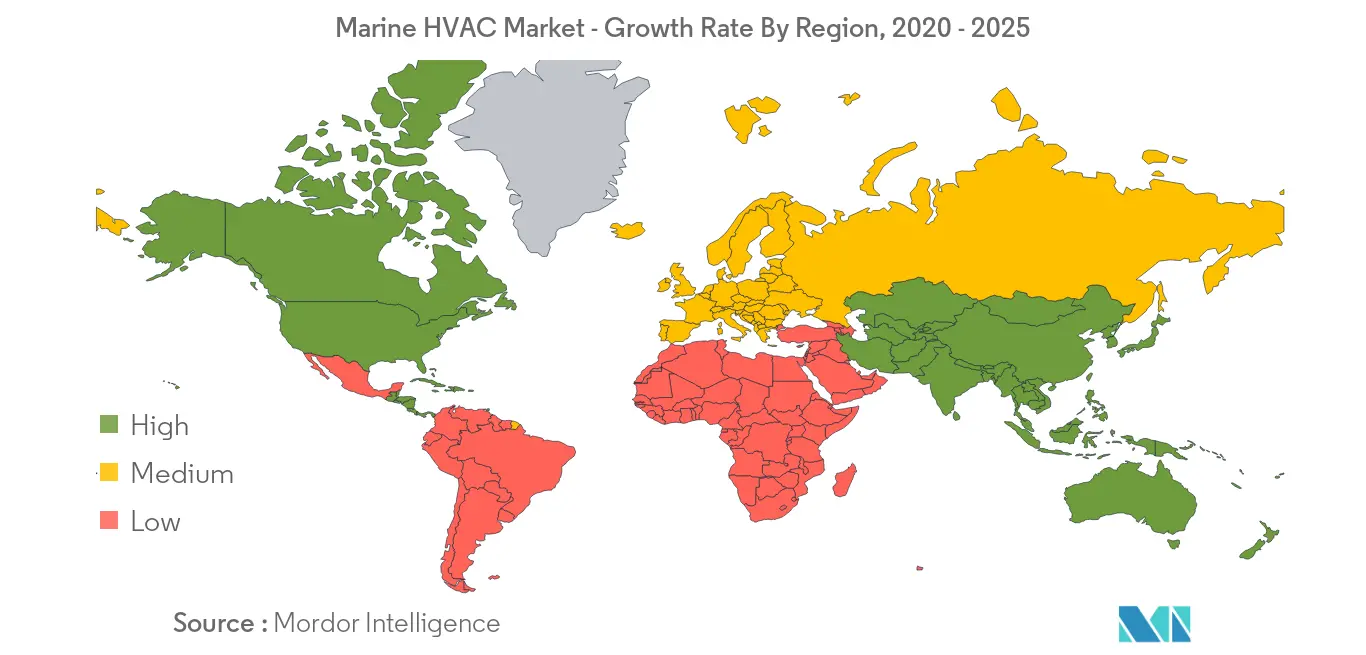Market Trends of Marine Hvac Industry
This section covers the major market trends shaping the Marine HVAC Market according to our research experts:
Passenger Vessels Segment is expected to grow with a Fast Pace during the Forecast Period
The passenger vessels include cruise ships, ocean liners, ferries, yachts, and other vessels. These vessel's share in dead-weight tonnage is negligible compared to that of other types of vessels, and thus accounted for more than 11% of the overall fleet's market value in 2018.
In 2018, 1.4 billion international tourist arrivals were recorded, according to the World Tourism Organization (UNTWO), a rise of 6% over 2017. Cruise shipping is one of the most dynamic and fastest-growing components of the leisure industry worldwide, and it can make a significant contribution to a destination's economy and local communities.
The demand for cruise ships is experiencing exponential growth, which grew from almost 3.8 million passengers in 1990 to more than 22.2 million in 2015. By the end of 2019, more than 25.3 million passengers are expected to travel on cruise ships. This adds up to an average annual passenger growth rate of 6.55% between 1990 and 2019.
The demand for cruise ships predominantly comes from North America, making up for almost 59% of the total number of cruise passengers across the world. To achieve more cabin comfort for the passenger, every cruise ship is equipped with a suitable heating and/or cooling system.
With the increase in tourism and passenger shipping, the demand for HVAC systems for marine applications is expected to grow significantly over the forecast period.

Asia-Pacific Dominating the Marine HVAC Market
The Asia-Pacific market is dominating the Marine HVAC market. Out of the Asia-Pacific region, India is the fastest-growing market.
The Indian maritime industry is an integral part of the country's logistics infrastructure and is accounted for 14-15% of the country's GDP.
The industry had gained significance due to the country's coastline of 7,517 km, with 12 major ports and over 150 non-major ports along the coastline.
- These 12 major ports majorly catered to export and import (EXIM), coastal shipping, and cruise shipping. Among the non-major ports, only 30-35% of the 150 ports catered to coastal shipping and a lot fewer catered to EXIM trade. In terms of the maritime cargo handled in the country, major ports registered a growth of 4.77% in 2018, at 680 million metric tons.
The domestic shipping industry handles 7-8% of the overseas trade by volume. The total merchant navy fleet includes coastal and overseas vessels that stood at ~ 1400. Around 88% of domestic capacity has been for overseas trade involving ~ 500 ships.
Oil tankers (crude and product) constituted 28% of the total overseas fleet, of 500 vessels. Dry cargo and bulk carriers accounted for another 28%, of the overseas fleet.
Currently, the Marine Business Group of KPCL is a major supplier of HVAC and refrigeration systems to vessels in the Indian Navy.


